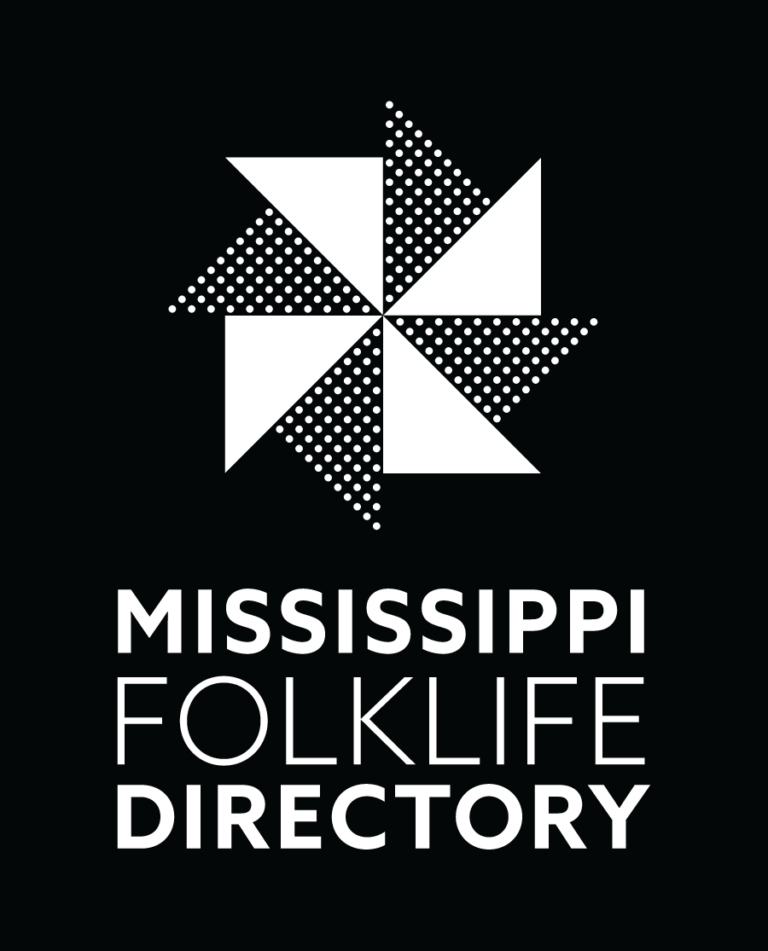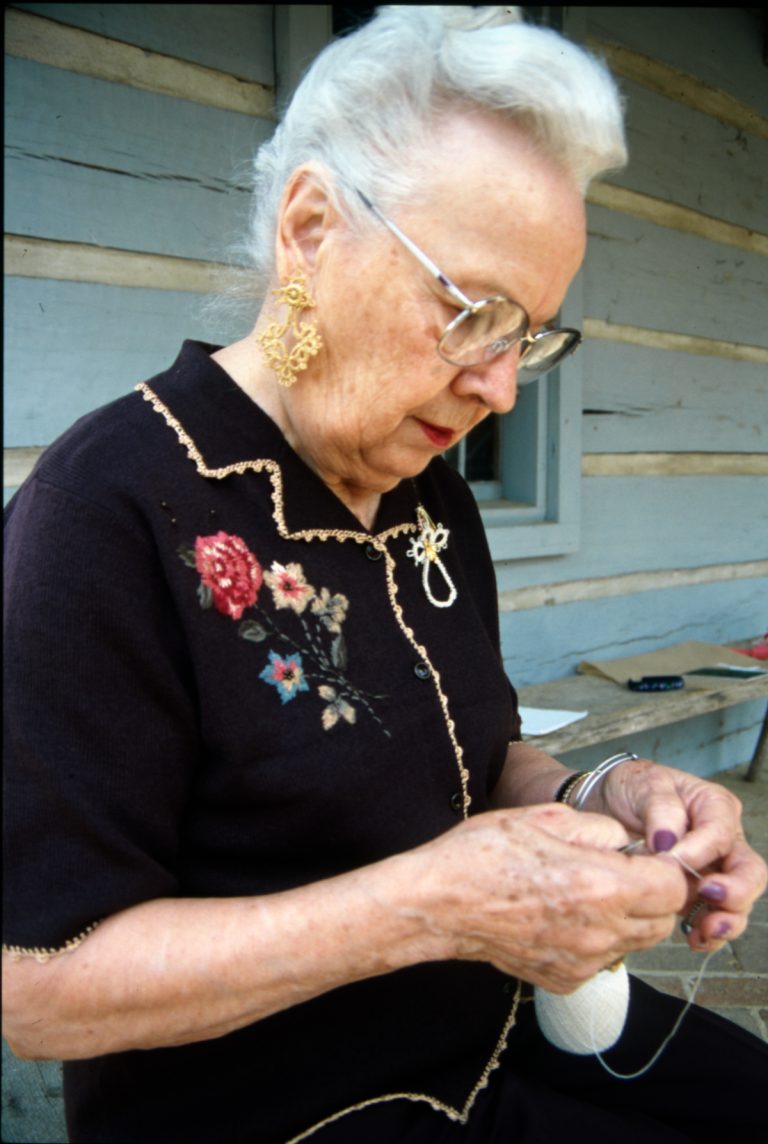Edna White has had a life full of different experiences. She has worked as a florist, a furrier (fur salesperson), a cook on a Mississippi River towboat, and many other jobs. She has always sewn and done different kinds of needlework in her spare time. In the last ten years, she has become very active in tatting.
Tatting is a form of lace making. The tatter uses fine thread and makes (called the “double-stitch”) and loops (called “picots”) in it to create the designs. The thread is wound onto a small, handheld shuttle. Thread is wrapped around the fingers of the left hand; the right hand is used to make the knots. For more intricate patterns, two shuttles are used.
White grew up in Brandon and was taught to tat by her mother. Her mother created tatting for many people in her community, in addition to working on other types of needlework. White learned the basics of tatting from her mother but did not pursue it as a young girl, thinking that it was “too slow” of an art form.
During the mid-1990s while working on bridesmaid’s dresses for her great-niece, White became inspired to try tatting again. She created tatting for the necklines for the dresses. Someone who saw the work asked her to teach some classes at a local museum. White was a featured instructor at Snyder Museum in Bastrop, Louisiana for several years. She is currently teaching tatting classes at the Craftsmen’s Guild in Jackson.
The pieces that White creates are a combination of traditional tatting and new designs that she formulates herself. She has gotten some of her designs through handwritten instructions left behind in old books. She has also tatted an American flag and other unique pieces.
In 1997, White was a participant in the Mississippi Delta exhibit at the Smithsonian Folklife Festival in Washington D.C. She was able to meet some tatters from throughout the country at the festival and was inspired by their work. She also participated in the re-staging of the Mississippi segment of the festival in Greenville in the spring of 1998.

